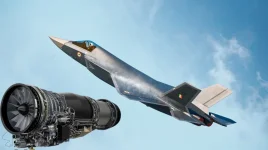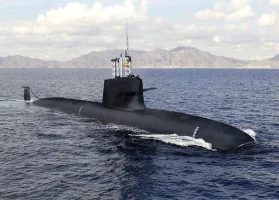- Views: 4K
- Replies: 28
India's aspirations to export its domestically developed Pinaka Multi-Barrel Rocket Launcher System (MBRLS) to France appear to have stalled, as Paris shifts focus towards creating its own advanced rocket artillery.
French defence authorities are reportedly prioritizing a national program to develop a system similar to the American High Mobility Artillery Rocket System (HIMARS), with aims to demonstrate the new technology by mid-2026.
This strategic direction, emphasising French defence self-reliance and offering European allies a non-American alternative, seems to have closed the door on earlier considerations of acquiring India's combat-proven Pinaka system.
The Pinaka system, created by India's Defence Research and Development Organisation (DRDO), had previously captured French interest. High-ranking French Army officials observed a demonstration of the system during a visit to India in 2024.
India promoted the Pinaka, particularly its Mark-II ER variant capable of reaching targets up to 90 km away and firing 12 rockets in under a minute, as a significantly more affordable option compared to the costly HIMARS.
Discussions regarding a potential sale were reportedly advanced in early 2025, with suggestions that the offer was even discussed at the highest levels between the Indian Prime Minister and the French President.
However, France has decisively moved towards developing a sovereign long-range precision strike capability. The French defence procurement agency, DGA, has initiated the Frappe Longue Portée Terrestre (FLP-T) program, tasking two industry groups – one led by Safran and MBDA, the other by Thales and ArianeGroup – to develop competing concepts. The goal is a tactical strike system with a minimum range of 150 km.
At the Eurosatory defence show in June 2024, the Safran-MBDA consortium displayed a model of their proposed 'Thundart' guided rocket, which they claim offers high precision and is designed as a purely European solution, free from US export controls. A test launch for this system is planned for mid-2026.
This push for a domestic system is driven by France's urgent need to replace its existing fleet of nine Lance-Roquettes Unitaire (LRU) systems, which are modified versions of the older M270 MLRS and are scheduled for retirement by 2027.
French military leaders, observing the effectiveness of long-range artillery like HIMARS in conflicts such as Ukraine, view this capability as crucial for modern warfare. Despite a budget allocation of €600 million through 2030 for the FLP-T program (aiming for 13 systems initially, increasing to 26 by 2035), France remains under pressure to meet the deadline.
While keeping options like HIMARS or systems from Israel and South Korea technically open, developing a French system avoids potential delays associated with relying on foreign production lines, particularly the strained US capacity for HIMARS which might push deliveries past 2027.
The conclusion of talks without a deal represents a setback for India's 'Make in India' initiative and its ambitions to become a major defence exporter. The Pinaka system has a proven operational record, having been used effectively during the 1999 Kargil War and deployed along India's sensitive borders. Armenia became the first international customer for Pinaka in 2022.
A sale to France would have been particularly significant, marking a first instance of India supplying major weaponry to one of its own largest arms providers. Ultimately, France's strategic preference for fostering a European defence ecosystem and possible reservations about integrating a non-NATO system into its forces likely influenced the decision against the Indian offer.



